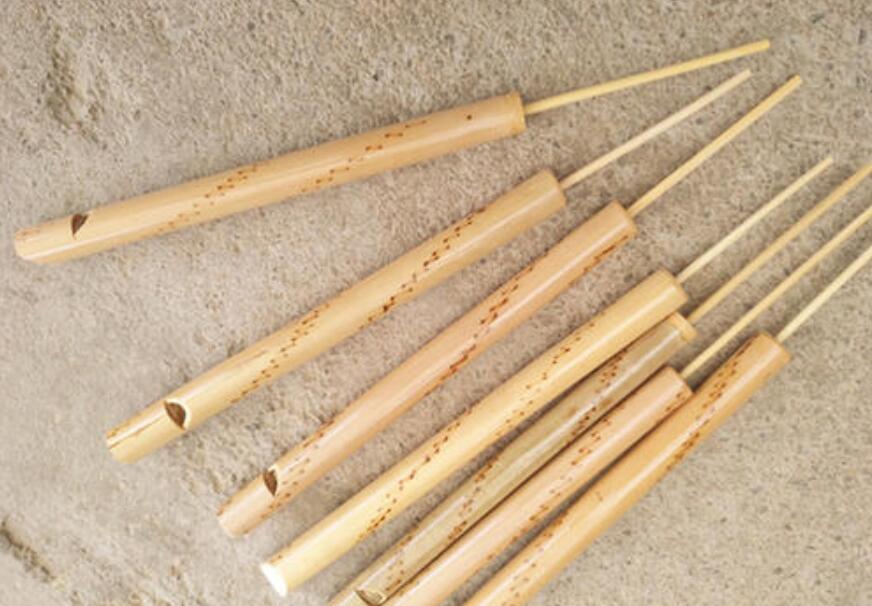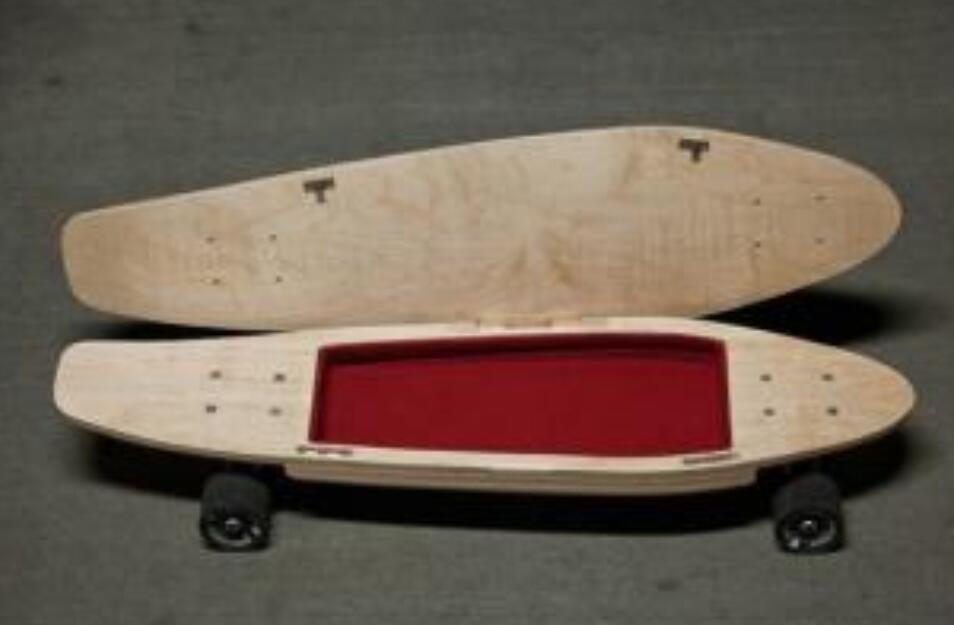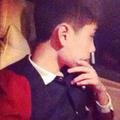
作文一:《一般现在时一般现在时的用法》5400字
一般现在时 一般现在时的用法:
1.表示事物或人物的特征、状态。如:The sky is blue.天空是蓝色的。
2.表示经常性或习惯性的动作。如:I get up at six every day.我每天六点起床。
3.表示客观现实。如:The earth goes around the sun.地球绕着太阳转。 一般现在时的结构:
1. be动词:主语+be(am ,is, are)+其它。如:I am a boy.我是一个男孩。
2.行为动词:主语+行为动词(+其它)。如:We study English.我们学习英语。 当主语为第三人称单数(he, she, it)时,要在动词后加"-s"或"-es"。如:Mary likes Chinese.玛丽喜欢汉语。
一般现在时常用的时间词:often, usually, sometimes, every day(week, year...)等。
A. 第三人称单数形式的构成
一般现在时主语是第三人称单数时,谓语动词后要加s或es,其变化规则与名词变复数的方法大体相同:
1. 一般情况下只在动词后加s,如work-works, write-writes.
2. 以o,s, x, sh, ch结尾的动词,后加es,如guess-guesses, mix-mixes, finish-finishes, catch-catches.
3. 以辅音字母加y结尾的动词,改y为i加es,如study-studies. 注:不规则变化的有have-has
I. 用be 动词的适当形式填空
1. __________ your father a worker﹖ Yes, he __________.
2.They __________ in the classroom.
3.Where __________ my books﹖
4.These ___________her pears.
5.How much _________the T-shirt?
6.How much __________ the socks?
8.You can _________ in our school music club.
9.Let's ___________friends.
10.He and I _________friends.
12. There ____ some apples on the table yesterday.
IV.用所给词的正确形式填空。
1. Let me _______ (help) you find your purse.
2. Would you like__________(buy) things for New Year's Day?
3. I like __________( make) kites.
4. He can________ (skate) better than ME.
5. You must _______( listen) to your teacher in class.
6. They enjoy________(play) basketball.
7. She wants________(watch) cartoons.
8. It's time for us ________( read) books.
I.用括号内动词的适当形式填空。
1. He often ________(have) dinner at home.
2. Daniel and Tommy _______(be) in Class One.
3. We _______(not watch) TV on Monday.
4. Nick _______(not go) to the zoo on Sunday. 5. ______ they ________(like) the World Cup? 6. What _______they often _______(do) on Saturdays? 7. _______ your parents _______(read) newspapers every day? 8. The girl _______(teach) us English on Sundays. 9. She and I ________(take) a walk together every evening. 10. There ________(be) some water in the bottle. 11. Mike _______(like) cooking. 12. They _______(have) the same hobby. 13. My aunt _______(look) after her baby carefully. 14. You always _______(do) your homework well. 15. I _______(be) ill. I'm staying in bed. 16. She _______(go) to school from Monday to Friday. 17. Liu Tao _______(do) not like PE. 18. The child often _______(watch) TV in the evening. 19. Su Hai and Su Yang _______(have) eight lessons this term. 20.-What day _______(be) it today? -It's Saturday
现在进行时
3). 现在进行时
现在进行时的用法:
.现在进行时表示现在正在进行或发生的动作,也可表示当前一段时间内的活动或现阶段正在进行的动作。
现在进行时的结构: be+动词ing.
现在进行时常见的标志词:now, Look! Listen!现在分词的构成
1. 一般情况下在动词后加ing,如study-studying, work-working.
2. 以不发音的字母e结尾的动词,先去掉e再加ing,如write-writing, move-moving.
3. 以一个元音字母和一个辅音结尾的重读音节结尾的动词,要双写末尾一个辅音字母,再加ing,如get-getting, begin-beginning.
I.用所给的动词的正确形式填空:
1.The boy __________________ ( draw)a picture now.
2. Listen ! Some girls _______________ ( sing)in the classroom .
3. My mother _________________ ( cook )some nice food now.
4. What _____ you ______ ( do ) now?
5. Look! They _______________( have) an English lesson .
6.They ____________(not ,water) the flowers now.
7.Look! the girls ________________(dance )in the classroom .
8.What is our granddaughter doing? She _________(listen ) to music.
9. It's 5 o'clock now. We _____________(have)supper now
10.______Helen____________(wash )clothes? Yes ,she is .
11.It's ten o'clock. My mother _____(lie)in bed.
13. We _____(play)games now.
14.What ____you____(do) these days?
15. ____he ___(clean) the classroom?
16. Who____(sing)in the next room?
17. The girl____(like)wearing a sweater. Look! She ____(wear)a red sweater today.
II.单项选择
1.Look! He _____their mother do the housework.
A. is helping B. are help C. is help D .is helpping
2 ._____are the boys doing ? They are singing in the room.
A .Who B .How C. What D.Where
3. Don't talk here. My mother _____.
A. is sleeping B .are sleeping C. sleeping D .sleep
4. Danny ______. Don't call him.
A. is writeing B .is writing C. writing D .writes
5.-When_____ he_____ back? - Sorry, I don't know.
A. does, e B. are ,ing C. is ,e D. is ,ing
6. The children _____ football.
A. is playing B. are playing C. play the D. play a
7. Listen! She____ in the classroom.
A. is singing B. sing C .to sing D. is sing
9. Some Germans _______(visit) our school.
A. is visiting B. are visiting C. visit D visiting
一般将来时
一般将来时的用法:表示将要发生的动作或存在的状态及打算、计划或准备做某事。 一般将来时的基本结构:①be going to + do;②will+ do.
一般将来时常用的时间词:
tomorrow, next week (month, year…),soon, the day after tomorrow,
1.我打算明天和朋友去野炊。
I_____ _______ _________ have a piic with my friends.
I ________ have a piic with my friends.
2. 下个星期一你打算去干嘛? 我将去打篮球。
What ________ ________ _________ _________ _________ next Monday? I _______ ______ _____ play basketball.
What _________ you do next Monday? I ________ play basketball.
3.你们打算什么时候见面。
What time _______ you _________ __________ meet?
II. 用所给词的适当形式填空。
1.Today is a sunny day. We___________________ (have) a piic this afternoon.
2. My brother _______________ (go) to Shanghai next week.
3.Tom often______________(go) to school on foot.
But today is rainy. He ______________ (go) to school by bike.
4.What do you usually do on weekends? I usually __________ (watch) TV and ____________(catch) insects?
5.It's Friday today. What _____she_________ (do) this weekend?
She ______________ (watch) TV and _____________ (catch) insects.
6. What ________ you______ (do) next Sunday? I ______________ (milk) cows.
7. Mary ____________ (visit) her grandparents tomorrow.
8. David ______________ (give) a puppet show next Monday.
9. I ________________ (plan) for my study now
作文二:《一般现在时的用法》1500字
一 般现在时的用法
一,一般现在时的意义:
(1)表示现在经常反复发生的动作,存在的状态或习惯性的动作。 She usually goes to school at 7:30 . We often get up at 6:00 in the morning.
(2)表示主语具有的特征,性格,能力和客观真理。 I’m 15 years old . Mike likes playing football.
(3)客观真理,客观存在,科学事实。
The earth moves around the sun.
Shanghai lies in the east of China.
(4) 表示格言或 警句 中。
Pride goes before a fall. 骄者必败。
(5).表示按规定、计划或时间表将要发生的事。
The teacher starts next week.
他下个星期出发。
二.一般现在时的构成
结构:A) 当句子表状态说明主语是什么或怎么样时,
其句型:陈述形式:主 +be动词(am, is, are) +表语 . 如:I am a student . ,
否定式:是在 BE 动词后加 not .He is not her father .
一般 疑问句形式:是将 BE 动词提前到句首 (即在主语之前) Are you a student?
一般疑问句有两种回答
一是,肯定回答用 Yes, 主语 +be 动词
二是否定回答用 No, 主语 +be .
B) 当谓语由实义动词充当,主语不是第三人称单数时,
句子结构为:主语 +动词原形 +其它
否定式为:主语 +don't+动词原形 +其它
疑问句为:Do+主语 +动词原形 +其它?
e.g. We speak Chinese.
We don't speak Chinese.
Do you speak Chinese?
Yes, we do. No, we don’ t.
三,当主语是第三人称单数时:动词的词尾要加 s 。叫做动词的第三 人称单数形式。
1. 句子结构为 : 主语 +动词 (词尾加 s 或 es ) +其它。 一般的动词尾 加 S 。 works , runs plays
2. 以 S sh ch x 结尾的动词加 es :teaches , washes watches discusses
3. 以辅音字母加 Y 结尾的先把 Y 变 i 在 +es studies , , carries . cries.
4. 以辅音字母加 O 结尾的 +es. Goes does
四,练习题:
1. This is my pencil ? (变一般疑问句 your pencil ?
2. These red socks are Kate’s . (变一般疑问句 socks K ate’s ?
3. I want to buy a big green bag . (变特殊疑问句 you want to buy ?
4. Mary does not have any books . (变肯定句 )Mary books .
5. The clothing shop is on sale . (变为否定句 )
6. She likes the black bag very much . (变为否定句 )
7.This girl is Joy Smith . (变为特殊疑问句 is this girl ?
8. The twins are eleven . (变为特殊疑问句 are the twins ? 对画线部分提问 Mike ? 10. She doesn’t know when to join the rock band . (变为肯定
句 )She when to join the rock band .
作文三:《动词的一般现在时》2300字
动词的一般现在时
一.教学目标:
1. 掌握一般现在时的第三人称单数动词+s的规则。
2. 能够使用一般现在时的一般疑问句和特殊疑问句来提问,并作出回答。
3. 学以致用,帮助学生学会使用一般现在时来描述生活中的事件。
二.教学重难点分析:
1. 重点:1)第三人称单数+s的规则;2)一般现在时的一般疑问句和特殊疑问句的问法。
2. 难点:特殊疑问句的问法。
三.教学策略:
1. 任务型教学模式
2. 趣味游戏模式
3. 课堂互动,提高兴趣。
四.课前准备:
音乐、PPT、名人卡片
五.教学过程:
Step 1 Leading-in
Warm-up: sing a Englisn song “She” together.
歌曲结束后,老师请几位同学试着说出这首歌中哪些歌词是用的一般现在时。 例:A: She hangs out everyday near by the beach.
B:She sings to the moon and the stars in the sky.
C:She is the story and the story is she.
T:这首歌里面有很多句子都是用的动词的一般现在时,那我们怎样判断一个句子的时态呢?上节课我们在讲动词的时候就讲过,动词决定了整个句子的时态。A和B同学列举的这两个句子动词都是用的第三人称的单数形式,所以它们是一般动词的一般现在时,而C同学列举的这个例子呢是be动词的一般现在时。
Step 2 Presentation
请两位同学说说他们的一天,试着用简单的一般现在时的句子描述。 Step 3 主语是第三人称单数时动词的变化规则
总结:观察名词变复数和动词变第三人称单数的相似之处,尽可能找出更多地符合上述规则的动词。
Step 4 Do some exercises
将下列动词变为三单形式:
Leave___ guess___ carry___ have___ say___
Step 5 一般现在时的基本用法
1. 表示经常发生的动作或存在的状态,常和always,usually,often,
sometimes,every day等表示时间的状语连用。 例:She is often late.
He go to work every day.(判断正误,并改正)
表示普遍真理和特征:例:Birds fly in the sky.
有些表示心理状态或感情的动词常用一般现在时表示。
例:I want your help.
在时间、条件状语从句中表示将来的动作。
例:If it doesn’t rain domorrow, we will go to the park.
表示已经预先安排或计划的肯定要发生的动作。(主要用于e,start,begin,leave等瞬间动词,句中常有表示将来时间的状语。)
例:Next week they leave for Shanghai.(下周他们动身去上海。)
用be about to do 表示马上就要发生的事情。(表达最近的将来,且不
与将来的时间状语连用。)
例:The plane is about to take off.(飞机马上就要起飞了。)
其他: (Here,There开始的句子
一般用现在时,而不用进行时。)
巩固练习:两人一组给对方写一个句子,请对方判断正误并改正。 2. 3. 4. 5. 6. 7.
Step 6 动词一般现在时的疑问句
Activity: 放幻灯片,上面有很多关于家庭的奇怪的问题,请学生轮流回答。 Question: Does your father e from the moon?
Does your mother always go shopping in America?
Does your brother live in the sea?
Do you often visit Yao Ming?
...
S: No,he doesn’t.
通过这些奇怪的问题学习动词一般现在时的疑问句的问法和简略答语。 结构:1.动词一般现在时否定句的结构:1)do not+动词原形(主语为I,you
及复数时,缩写为don’t) 2)be动词的否定句是直接在be动词后加
not.
3. 一般现在时的疑问句:1) Do/Does+主语+动词原形+......? 回答:Yes,主语+do/does; No, 主语+don’t/doesn’t.
2)be 动词的疑问句是:be+主语+......? 回答:Yes, 主语+be动词;No, 主语+be动词+not.
Step 7 Pair Work
两个同学一组用动词的一般现在时的疑问句提问并回答,反复练习加以巩固。 Step 8 动词一般现在时的特殊疑问句
结构:疑问词(where/when/how...)+一般疑问句?
例:where do you live?(你住在哪儿?)
Do you live here?(你住在这儿?)
How does he go to school? (他怎么去上学?)
Does he go to school by bus? (他是坐公共汽车上学吗?)
补充:1.特殊疑问句只需将疑问词放在句首,后面仍用倒装句语序;如
果对主语提问,则是:疑问词+谓语+其它成分?例:Who looks
after the baby?
2.特殊疑问句的回答要视疑问词而定,需要同学们自己去总结。
Step 9 Show Time
老师请几组同学带上准备的名人卡片,用动词的一般现在时去描述他们,
可以加上声音、动作等加以模仿,台下的同学可以采用一般疑问句或特殊疑问句进行提问,然后通过这些信息台下的同学猜出这些名人是谁。
The ending
归纳总结本课知识。
作文四:《一般现在时的讲解》900字
一般现在时态讲解
1.经常发生的动作,表示一般现在时
询问:你们经常干什么?
2.结构:sb do sth →
I You we the children ..
例子:I watch TV at night
We have English lesson in the morning.
......
一般疑问句:Do sb do sth?
肯定:Yes sb do
否定:No sb do not
I like climbing the mountain. (疑问句、肯定否定回答)
Do you like climbing the mountain?
Yes,I do. No,I don’t
3.对不同部分划线提问。
in my classroom.
1) What do you often do in your classroom?
2) What do you often play in your classroom.
3) Where do you otten play the piano?
4. 标志词
Often、usually、sometimes、always、
never
Every day/week/month/year
On Sundays 在每一个星期天
例子:we often fly to America by plane
1)What do you often do ?
2) Where do you often fly?
3) How do you often fly to America?
====================================================
1.Sb does sth (he/she/it/this boy/my father...)-----三单 一般疑问句:does sb do sth?(恢复动词原形)
肯定:Yes sb does
否定:No, sb doesn’t
训练一般疑问、肯定、否定、不同部分划线提问) What does he always do?
作业布置:At school, I ...不少于50词。(上课、活动...) My mother ...(爱好、活动)
完成小白卷。
作文五:《一般现在时的句子》4200字
一般现在?时的?句子??
篇一?:?
一般?现在?时的?句子?转换? ?一般现?在时?的句?子转?换:? ?
(1?)当句?子中?有?be?动词或??情态动词?时,?则把?be?动词?或情?态动?词?(?can,?co?ul?d?等等?)提到?主语?的前?面变?成疑?问句?;?在be?(?来自?:.c?nb?Ot?hw?In?. ?博? 威? 范文?? 网:?一般现?在时?的句?子?)动词?或情??态动词后?面加?no?t?变成否??定句. ?例:??
?陈述?句:? ?
She? i?s ?a ?st?ud?en?t.? ?疑问句?? ?Is? s?he? a? s?tu?de?nt?? ?否定?句?? S??he ?is ?no?t ?a ?st?ud?en??t. ?
?陈?述句?:?
I ?ca?n ?sw??im. ?疑问?句?? C?an? y?ou? s?wi?m ?否定?句?? I? c?an? n?ot? ?swi?m.? ?
(?2)当?句子?中即?没有?be?动词?,也?没有?情态?动词?时,?则在?主语?前加??助动词?do ?(y?ou?,?以及复?数?)?, do?es?(单?数?she?,h?e,?it??)变成问?句;?在主??语后谓语?动词?前加?助动?词?don?’t?(?I,y?ou?,?以及复?数?), ?do?es?n’?t?(单数?sh?e,??he,i?t?)变成?否定?句,?助动?词后?的动??词要变成?动词?原形?。? ?
例:?
?陈??述句:?
We? g?et? u?p ?at? 7??:00 ?ev?er?y ?mo?rn?in?g.? ?疑问句??D?o ?yo?u ?ge?t ?up? a?t ?7:?00? e?ve?ry? m?or?ni??ng? ?否定?句??We? d?on?’t? g?et? u?p ?at? 7?:0?0 ?ev?er?y ??morn?in?g.? ?
?陈?述句?:?
Sh?e ?ha?s ?a ?li?tt?le? b?ro?th?er?. ??疑问句?? D?oe?s ?sh?e ?ha?ve? a? l?it?tl?e ?
br?ot?he?r?? ?否定句?? ?Sh?e ?do?es?n’?t ?ha?ve? a? l?it?tl?e ?br?ot?he?r.?篇二?:?
一般?现在?时改?写句?子? 按要?求改?写句?子:? ?1、? He? i?s ?my? f?at?he?r.? ?变否定?句:? ?变一般??疑问句:? ?
肯定回?答:? ?
否定回?答:? ?
2、? Yo?u ?ar?e ?a ?be?au?ti?fu?l ?gi?rl?. ?变否?定句??: 变一?般疑?问句?:?
肯定?回答?:?
否定?回答?:?
3?、 I? a?m ?a ?bo?y.? ?变否定?句:? ?
变一般?疑问?句:? ?
肯定回?答:? ?
否定回?答:? ?
4、? I ?li??ke f?oo?tb?al?l.? ?变否定?句:? ?变一般?疑问?句:? ?
肯定回?答:? ?
否定回?答:? ?
5、? Sh?e ?li??ves ?in? C?hi?na?. ?变否?定句?:? 变一?般疑?问句??:
肯定?回答?:?
?否定回答?:?
6?、 H?e ?wa?nt?s ?to? g?o ?to? s?ch?oo?l.? ?变否定?句:? ?
变一般?疑问?句:? ?
肯定回?答:? ?
否定回?答:? ?
7、? He?r ?un?cl?e ?wo?rk?s ?in?? a h?os?pi?ta?l.? ?变否定?句:? ?
变一般?疑问?句:? ?
肯定回?答:? ?
否定回?答:? ?
8、? I ?ha?ve? a? b?as?ke?rb?al?l.? ?变否定?句:? ?变一般?疑问?句:??
肯定回?答:? ?
否定回?答:? ?
9、? Sh?e ?ha?s ?so?me? b?oo?ks?. ?变否?定句?:? 变一?般疑?问句?:?
肯定?回答?:?
否定?回答?:?
10?、? He?? doe?s ?hi?s ?ho?me?wo?rk? e?ve?ry? d?ay?. ?变否?定句?:?
变一?般疑?问句?:?
?肯定回答?:?
?否定回答?:?
11?、? My? b??irth?da?y ?is? S?ep?te?mb?er? 5?th?. ?变否?定句?:?
变一?般? ?
12?、 I??t is? a? c?le?ve?r ?do?g.? ?变否定??句: ?变一般?疑问?句:? ?
肯定回?答:? ?
否定回?答:? ?
13?、 I? o?ft?en? g?o ?sh?op?pi?ng? w??ith ?my? f?ri?en?d.? ?变?否定句:? ?
变一般?疑问?句:? ?
肯定回?答:? ?
否定回?答:? ?
篇三:? ?
一般现?在时?例句? ?一般现?在时?经典?例句? ?
1.? S?he? d?oe?s ?no??t kn?ow? ?Lon?do?n ?ve??ry w?el?l.? 2?. ?Do? y?ou? h?av?e ?an?y ?sh?oe?s ??like? t?he?se?? ?3.? I?’m? a?fr?ai?d ?th?at? I? c??an’t?. ?4.? B?ut? ?the??y’re? n?ot? i?n ?fa?sh?io?n ?th?is? y?ea?r.?. ?5.?? The?y ?lo?ok? v?er?y ?un?fo?rt?ab?le?. ?6 ?.B?ut?? wom?en? a?lw?ay?s ?we?ar? u?nf?or?ta?bl?e ?sh?oe??s! 7?. ?Sh?e ?do?es? n?ot? k?no?w ?Lo?nd?on? a?t ??all.? 8?. ?I ?wa?nt? t?o ?se?e ?th?e ?de?nt?is?t ??plea?se?. ?9.? I? f?ee?l ?aw?fu?l.? 1?0.? C?an? y??ou e? a?t ?10?.a?m ?.o?n ?Mo?nd?ay? ?Apr?il? 2?4t?h?? 1?1.? S?am?’s? h?er??e. 1?2.? I?’m? n?ea?rl?y ?re?ad?y.? 1?3.? W?e ?ne??ed a? l?ot? o?f ?th?in?gs? t?hi?s ?ye?ar?. ?14?. ??I ho?pe? t?ha?t ?yo?u ?ha?ve? s?om?e ?mo?ne?y.? 1??5. D?o ?yo?u ?wa?nt? t?o ?ha?ve? l?un?ch? w?it?h ??us? ?16?. ?He? i?s ?st?il?l ?he?re?. ?17?. ?He? i??s a ?ve?ry? n?ic?e ?pe?rs?on?. ?18?. ?Th?er?e ?is?? a c?ar? r?ac?e ?ne?ar? o?ur? t?ow?n ?ev?er?y ?ye??ar. ?19?. ?Ho?w ?ar?e ?yo?u ?(a?ll? k?ee?pi?ng?)??? 20.? ?Jil?l’?s ?ei?gh??teen? y?ea?rs? o?ld?. ?2 ?
1.? S?he?’s? n?ot? a? b??aby.? 2?2.? Y?ou? l?oo?k ?ve?ry? w?el?l.? 2?3.? H??e is? ?in ?be?d.? 2?4.?? He ??has ?a ?ba?d ?co?ld?. ?25?. ?He? l?oo?ks? i??ll. ?26? H?e ?fe?el?s ?il?l.? 2?7 ?It?’s? o?ft?en?? wet? i?n ?th?e ?We?st?. ?28? T?he? d?ay?s ?ar?e ??long? a?nd? ?the? n?ig??hts ?ar?e ??shor?t.? 2?9 ?Th?e ?su?n ?ri?se?s ?ea??rly ?an?d ?se?ts? l?at?e.? ?30 ?Th?e ?Sa?wy?er?s ?li?ve? a?t ?87? K?in?g ??Stre?et?. ?31? T?he?ir? f?at?he?r ?ta?ke?s ?
th?em? t?o ?sc?ho?ol? e?ve?ry? d?ay?. ?32? S?he? a?lw?ay?s ?ea?ts? h?er? l?un?ch? a?t ?no?on?. ?33? M?rs?. ?Sa?wy?er? u?su?al?ly? d?ri?nk?s ?te?a ?in? t?he? l?iv?in?g ?ro?om?. ?34? I?s ?th?at? t?in? o?f ?to?ba?cc?o ?fo?r ?me???(ti?n?是单数?,所?以用?is?)? 35? ?Can? y?ou? m?ak?e ?th?e ?te?a,? S?am?? ?(?can?:?
能力?)? 36? I?s ?th?er??e an?y ?wa?te?r ?in? t?he? k?et?tl?e?, 3?7 ?Th?er?e ?ar?e ?so?me? i?n ?th?e ?cu?pb?oa?rd?.?(?some?这里?是代?词,?so?me? w?at?er?里是?数词?)? 38? T?he? b?os?s’?s ?ha?nd?wr?it?in?g ?is? t?er?ri?bl?e?。(’?s?是名词?所有?格,?ha?nd?wr?it??ing?是名词?,不?是现??在分词)? 3?9 ?Th?is? l?am?b’?s ?ve?ry? g?oo?d.??(lam?b?是整体?,不?可数?名词?,’?s?是is?的缩?写)? 4?0 ?Bu?t ?he? d?oe?sn?’t? ?lik?e ?ch?ic?ke?n.? (?ch?ic??ken?不可数?名词?译为?鸡肉?) ? ?
?
作文六:《一般现在时的用法》2700字
一般现在时?的用法
同学们,大家学习了?一般现在时?的用法,下面咱们来?归纳一下:
1(概念:一般现在时?表示经常的?、习惯性的动?作或存在的?状态。
2(构成:一般现在时?的构成主要?有两种形式?:
(1)be型:句子的谓语?动词只有b?e(am,is或ar?e):
a(肯定句中,只出现be?,如:
I am a stude?nt(我是一名学?生。
b(否定句中,要在be后?面加not?,如:
She isn't a teach?er(她不是教师?。
c(一般疑问句?,要将be放?在句子开头?(注意句首字?母大写),句尾用问号?,答语用Ye?s,
主语+be(或No,主语+be+not(如:
—Are you ready?,—你准备好了?吗,
—Yes,I am(—是的,我准备好了?。
(—No,I'm not(—不,我没准备好?。)
(2)实义动词型?:句中的谓语?动词为实义?动词(也叫行为动?词):
a(肯定句中,只出现实义?动词,如:
I get up in the morni?ng(我早晨起床?。
b(否定句中,要在实义动?词前面加d?o(does),not,do(does)作助动词,本身无意义?,
常与not?缩写成do?n't(doesn?'t),如:
I don't like veget?ables?(我不喜欢蔬?菜。
c(一般疑问句?,要在句子开?头加助动词(does?Do),句尾用问号?,简略答语用?Yes,主语+do
(does)(或No,主语+do(does),not(如:
—Do you like orang?es,—你喜欢桔子?吗,
—Yes,I do(—是的,我喜欢。
不,我不喜欢。) (—No,I don't(—
11.1 一般现在时?的用法
1) 经常性或习?惯性的动作?,常与表示频?腮度的时间?状语连用。
时间状语: every?…, somet?imes, at…, on Sunda?y
I leave? home for schoo?l at 7 every? morni?ng.
2) 客观真理,客观存在,科学事实。
The earth? moves? aroun?d the sun.
Shang?hai lies in the east of China?.
3) 表示格言或?警句中。
Pride? goes befor?e a fall. 骄者必败。
注意:此用法如果?出现在宾语?从句中,即使主句是?过去时,从句谓语也?要用一般现?在时。
例:Colum?bus prove?d that the earth? is round?..
4) 现在时刻的?状态、能力、性格、个性。
I don't want so much.
Ann Wang write?s good Engli?sh but does not speak? well. 比较:Now I put the sugar? in the cup.
I am doing? my homew?ork now.
第一句用一?般现在时,用于操作演?示或指导说?明的示范性?动作,表示言行的?瞬间动作。再
如:Now watch? me, I switc?h on the curre?nt and stand? back. 第二句中的?now是进?行时的标志?,表示正在进?行的动作的?客观状况,所以后句用?一般现在
时?。
一般过去时?的用法
1)在确定的过?去时间里所?发生的动作?或存在的状?态。
时间状语有?:yeste?rday, last week, an hour ago, the other? day, in 1982等?。
Where? did you go just now?
2)表示在过去?一段时间内?,经常性或习?惯性的动作?。
When I was a child?, I often? playe?d footb?all in the stree?t.
Whene?ver the Brown?s t durin?g their? visit?, they were given? a warm welco?me.
3)句型:
It is time for sb. to do sth "到……时间了" "该……了"
It is time sb. did sth. "时间已迟了?" "早该……了"
It is time for you to go to bed. 你该睡觉了?。
It is time you t to bed. 你早该睡觉?了。
would? (had) rathe?r sb. did sth. 表示'宁愿某人做?某事'
I'd rathe?r you came tomor?row.
4) wish, wonde?r, think?, hope 等用过去时?,作试探性的?询问、请求、建议等。
I thoug?ht you might? have some. 我以为你想?要一些。
比较:
一般过去时?表示的动作?或状态都已?成为过去,现已不复存?在。
Chris?tine was an inval?id all her life.
(含义:她已不在人?间。)
Chris?tine has been an inval?id all her life.
(含义:她现在还活?着)
Mrs. Darby? lived? in Kentu?cky for seven? years?.
(含义:达比太太已?不再住在肯?塔基州。)
Mrs. Darby? has lived? in Kentu?cky for seven? years?.
( 含义:现在还住在?肯塔基州,有可能指刚?离去)
注意: 用过去时表?示现在,表示委婉语?气。
1)动词wan?t, hope, wonde?r, think?, inten?d 等。
Did you want anyth?ing else?
I wonde?red if you could? help me.
2)情态动词 could?, would?.
Could? you lend me your bike?
作文七:《动词的一般现在时》3200字
【动词的一般现在时态】精讲篇 2017-5-10
动词是表示主语做什么,或表示主语是什么或怎么样的词。在英语中,不同时间发生的动作或状态要用不同的动词形式来表示,这种表示动作或状态发生在不同时间的动词形式称作动词时态。
一、【一般现在时的用法(含义)】
1.一般现在时表示现在的状态。
1) I am a student and I’m twelve. 2) Jack is from China.
3) She has three aunts. 4) Where is the bag?
2.一般现在时表示主语具备的性格和能力。
1) He can speak English and play the guitar. 2) I like playing basketball, but I don’t like to play baseball.
3) Mary likes P.E.,but she doesn’t like music. 4) Ann writes good English but doesn’t speak well.
3.一般现在时表示经常性、习惯性或反复性的动作。
◆通常和always, usually, often, sometimes, never,every day (week, year, month…), on Mondays/weekends等表示频度的时间状语(标志词)连用。 play the piano on weekends. play basketball after school. gets up at six o’clock in the morning. eats breakfast at home.
4.一般现在时表示客观存在、自然现象等客观事实及普遍真理。
Tomorrow is Tuesday. 明天是星期二。 Shandong is in the east of China. 山东位于中国的东部。 Summer es after spring. 春去夏来。 The earth goes around the sun. 地球绕着太阳转。 The sun rises in the east. 太阳从东方升起。
5.一般现在时表示格言,谚语或警句。
The man who has never been to the Great Wall is not a real man. 不到长城非好汉。
Pride goes before a fall. 骄者必败。
二、【一般现在时的构成】
our English teacher, Tom, Kate, China, that book等。
#need既可作情态动词,又可作行为动词。作行为动词时,后接名词、代词或to do形式。
※行为动词的第三人称单数形式变化规则表:
- 1 - 注意:〔不规则变化〕have→has
三、【一般现在时的结构类型】
一般可分以下四种类型:
A.be型 :由be动词+名词、形容词、副词、代词、数词或介词短语等一起构成谓语,表示主语的个性、
特征或状态。
①I am a girl.(主语+be动词+名词) ②They are young.(主语+be动词+形容词)
③He is out.(主语+be动词+副词) ④That pen is mine. (主语+be动词+代词)
⑤I am fifteen.(主语+be动词+数词) ⑥The bike is under the tree.(主语+be动词+介词短语)
B.do型:由行为动词充当谓语,表示经常性、习惯性或反复性的的动作,其构成为“主语+动词原形或
动词第三人称单数形式+宾语/其他”。
①I know him very well. ②He helps me with my math on weekends.
C.there be型:句子表示“存在”,其构成为“There is/are+主语(sb./ sth.)+某地”,意为“某地有某人
或某物”。be的用法遵循“就近原则”,即主语或并列主语中的第一个主语是单数可数名词或不可数名词,用there is;主语或并列主语中的第一个主语是复数可数名词,用there are。
①There is an eraser on the teacher's desk. ②D.情态动词型:说话人对所叙述的动作或状态的看法。
①He can speak a little English.(can+speak) ②Must I have a shower? (must+have)
四、【一般现在时的句型转换】
A.否定句:
首先确定句中有无be动词或情态动词。若有〔A、C、D型〕,在be动词或情态动词后面加not(可缩写)。若无〔B型〕,根据主语在后面添加助动词don’t或doesn’t(主语是第三人称单数时用,助动词doesn’t后的原第三人称单数形式动词要变成动词原形)。
She is a student. → She is not/isn’t a student. I can swim. → I can not/can’t swim.
We get up at 7:00 every morning. →
up at 7:00 every morning.
She has a little brother. →
have a little brother.
Tom does his homework at home. →
do his homework at home.
◆陈述句分为肯定结构的陈述句(肯定句)和否定结构的陈述句(否定句)两种。
B.一般疑问句:
首先确定句中无be动词或情态动词。若有〔A、C、D型〕,将be动词或情态动词提到句首,句尾用句号。若无〔B型〕,根据主语判断后在句首添加Do或Does(主语是第三人称单数时用,原句中的第三人称单数形式动词要变成动词原形),句尾用问号。注意:句中第一人称和第二人称要互换。肯定/否定回答用:Yes, …+句首词(is/am/are/can/do/does). / No, …+句首词(is/am/are/can/do/does) not. She → Is she a student? Yes, she is./ No, she isn’t.
I swim. → Can you swim? Yes, I can./ No, I can’t.
We up at 7:00 every morning. →
Yes, we do./ No, we don’t. Mary a little brother. →
a little brother? Yes, she does./ No, she doesn’t.
C.特殊疑问句:特殊疑问词+一般疑问句?
首先分析划线部分的意思,确定用什么疑问词{who, whose, what (color/time/…), which, when, where, why, how (many/much/long/far/old/…)}替换,然后看句中有没有be动词或情态动词,若有〔A、C、D型〕,将be动词或情态动词放到疑问词的后面(主语前面)。若无〔B型〕,则根据主语判断添加do
或does(主语是第三人称单数时用,原句中的第三人称单数形式动词要变成动词原形)并置于疑问词的后面,剩余部分照录。注意:句中第一人称和第二人称要互换。 →How old is John?
→
→What
→When - 2 -
作文八:《一般现在时的用法》13500字
英语有26个字母。元音只包括a、e、i、o、u这五个字母,其余的都为辅音。y是半元音、半辅音字母,但在英语中都把他当作辅音。
一般现在时的用法
1) 表示经常的或习惯性的动作,常与表示频度的副词连用。常用的频度副词有: always、often、 usually、seldom、never。频度副词在句中通常放在行为动词之前,系动词、助动词之后。
例如: He often goes swimming in summer.他夏天经常游泳。
I usually leave home for school at 7 every morning. 每天早上我七点离开家。 2)表示现在的状态。
例如:My father is at work.He is very busy. 我父亲在工作,他很忙。 The boy is twelve. 这男孩十二岁。
3)表示主语具备的性格、特征和能力等。
例如:All my family love football .我全家人都喜欢足球。
My sister is always ready to help others . 我妹妹总是乐于助人。 Ann writes good English but does not speak well. 安英语写得不错,讲的可不行。 4)表示客观真理,客观存在,自然现象。
例如:The earth moves around the sun. 地球绕太阳转动。
Shanghai lies in the east of China. 上海位于中国东部。
5)表示按计划或安排好的,或将要发生的动作,可用一般现在时表将来。但只限于start,begin,leave,go,e,arrive,return,take place等。
例如:The train leaves at six tomorrow morning. 火车明天上午六点开。 He es back tonight. 他今晚回来。
6)在复合句中,当主句是一般将来时,时间或条件状语从句的谓语动词只能用一般现在时来表示将来要发生的动作。
例如: I'll tell him the news when he es back. 他回来时,我将告诉他这个消息。
If you take the job , they will talk with you in greater details.
如果你接受这份工作,他们将和你谈谈细节。
1
\
在一般现在时中,当主语是第三人称单数时,谓语动词要用第三人称单数形式,即常在动词原形后加-s或-es。那么哪些是第三人称单数呢,
一、 人称代词he, she, it是第三人称单数。He likes watching TV. 二、 单个人名、地名或称呼作主语;是第三人称单数。Beijing is in China. 三、 单数可数名词或"this / that / the+单数可数名词"作主语时,是第三人称单数。
A horse is a useful animal. This book is yours.
四、 不定代词someone, somebody, nobody, everything, something等及指示代词
this, that作主语时,是第三人称单数。如:
?Everyone is here. 大家到齐了。
?There is something wrong with the watch. 这块手表有毛病。 五、 不可数名词作主语时为第三人称单数。如:
?The milk is in the glass. 牛奶在玻璃杯里。
六、 当数字或字母作主语时,看作第三人称单数。如:
?"6" is a lucky number. "6"是个吉利数字。
动词原形变第三人称单数的规则与发音规律同名词单数变复数大致相同
1、大多数动词在词尾加“S” -s在清辅音后读,s,,在浊辅音或元音后读
,z,,ds读,dz,,ts读,ts,。如:
help?helps,helps,,know?knows,nEuz,,get?gets,gets,,
read?reads,ri:dz, stop,stops [s] ; make,makes [s]
read,reads [z] ; play,plays [z];say—says[z] eats drinks sleeps sees
looks hears walk talk reads writes
2、以字母s,x,ch,sh结尾的加-es读,iz,或有些以o结尾的动词加-es读/z/如: guess?guesses,'gAsiz,,fix?fixes,'fiksiz,,teach?teaches,'ti:tFiz,,wash?washes,'wRFiz,
注意:go?goes,gEuz,,do?does,d?z,
kisses misses fixes dresses stresses presses expresses impresses
brushes pushes flashes watches matches
2
3、以辅音字母加“y”结尾的,要先将“y”变为“i”,然后在加“es”读[iz] 元音字母不
变,直接加s,如:fly,flies [z]; carry,carries [z] study,studies [z]; worry,worries
stay pay play buy say enjoy destroy display spray slay
marry—marries hurry—hurries try--tries dry—dries
cry—cries bury--buries
让学生分辨:play?plays,pleiz,,say?says,sez,
4、特殊词例外。如: be?is,have?has
注意:1、do [du:],does [dz] 2、say [sei],says [sez]
2、以不发音字母“e”结尾的开音节词,如果尾音是[s],[z]时,加“s”后字母
“e”发音,与所加“s”,一起读做[iz]。 如:close,closes [iz
引申一下 名词复数的规则变化
规则变化
只有可数名词才有单数和复数两种形式。
一、绝大多数的可数名词的复数形式,是在该词末尾加上后辍-s。
例:friend?friends; cat?cats; style?styles; sport?sports; piece?pieces
二、凡是以s、x、ch、sh结尾的词,在该词末尾加上后辍-es构成复数。
例:bus?buses; fox?foxes; match?matches; flash?flashes ;box ?boxes; watch ?watches; actress ?actresses; class ?classes; coach(长途车) ?coaches; dress ?dresses; sandwich ?sandwiches; toothbrush ?toothbrushes; waitress(女侍者) ?waitresses
三、以辅音字母+y结尾的名词,将y改变为i,再加-es。
例:candy?candies; daisy(雏菊)?daisies; fairy?fairies; lady?ladies; story?stories
strawberry ?strawberries; baby ?babies; puppy ?puppies; library ?libraries; dictionary
?dictionaries; cherry ?cherries; activity ?activities ,country—countries,fly—flies.
区别: 元音字母+y 结尾的名词变复数时,直接加s变复数【元音字母有
a,e,o,u,i】
monkey---monkeys holiday---holidays boy---boys
key---keys
四、以-o结尾的名词,如果不是外来词或缩写词,就加-es,否则加-s构成复数。 (有生命
的加es,无生命的加s)
3
口诀:黑人和英雄吃土豆和西红柿
negroes and heroes eat tomatoes and potatoes
反例:radio—radios, piano?pianos(外来词); photo?photos; zoo- zoos,bamboo-bamboos,
kimono--kimonos
五、以-f或-fe结尾的名词,多为将-f或-fe改变为-ves, 例knife?knives; life?lives; leaf?leaves; scarf(围巾)?scarves
树叶半数自己黄,妻子拿刀去杀牛;架后窜出一只狼,就像小偷逃命忙。 解释:leaf(树叶)half(一半)self(自己)wife(妻子) knife(刀子)calf (小牛)
shelf(架子)wolf(狼)thief(小偷)life(生命)
但是,也有例外。海湾农奴信酋长,悬崖证据上顶房。 在这些词中,由单数变复数时,直接在词尾加-s构成,即:海湾(gulf - gulfs)农奴(serf
- serfs)信(belief -beliefs)酋长(chief - chiefs),悬崖(cliff -cliffs)证据(proof
- proofs)上顶房(即房顶、屋顶 roof - roofs)
部分单词的单复数同形
口诀: 中日警察好友来聚会,鹿、羊、鱼、牛齐齐把家回。
解释:Chinese, Japanese ,police,people, deer, sheep, fish ,cattle
但除人民币的元、角、分外,美元、英镑、法郎等都有复数形式。
如:a dollar, two dollars; a meter, two meters。
在英语名词复数中,表示(某)国人的名词复数有些加S,有些又不加,学生常常会出错。
这里有一条顺口溜就能帮助学生解决这一问题。它是:“中日瑞不变,英法都要变,其他国
人加S。如Chinese--Chinese, Japanese--Japanese,
Swiss--Swiss Englishman--Englishmen, American--Americans German--Germans.
极少数单词,其复数形式没有任何规律。
口诀:男士、女士a变e; 鹅牙脚双o变双e; 孩子们想去天安门, 原形后面r、 e 、n;
老鼠虱子本爱牛, mouse, louse和ox. 解释:goose-geese; mouse-mice; foot-feet. man-men; woman-women; tooth-teeth;foot-feet,
child-children,louse-lice,ox-oxen
另一些名词则以复数词出现的机会较多
例clothes;; shoes (鞋子)、sunglasses (太阳镜)、shorts短裤; scissors剪刀;
spectacles眼镜; shears大剪刀 trousers长裤; wages工资
一、 一般现在时
1.概念:经常、反复发生的动作或行为及现在的某种状况。
2.时间状语: Always, usually, often, sometimes, every week (day, year, month…), once a week(day, year, month…), on Sundays,
3.基本结构:动词 原形 (如主语为第三人称单数,动词上要改为第三人称单
数形式)
4.否定形式:主语+am/is/are +not+其他;
4
若为行为动词,则在其前加don't,
如主语为第三人称单数,则用doesn't,同时还原行为动词。
5.一般疑问句:把be动词放于句首;
用助动词do提问,
如主语为第三人称单数,则用does,同时,还原行为动词。
例句:. It seldom snows here.
He is always ready to help others.
Action speaks louder than words..
二、现在进行时
1.概念:表示现阶段或说话时正在进行的动作及行为。
2.时间状语:Now, at this time, these days, this week,this month at the moment,right now 等;或者告诉你一个准确的现在时间,或者用Can't you see?look,listen(常用于句子的开头,表示提醒听者注意正在发生的事情)
3.基本结构:主语+be +doing +其他she is doing her homework.
4.否定形式:主语+be +not +doing+其他she isn’t doing her homework.
5.一般疑问句:把be动词放于句首。
.例句: How are you feeling today?
He is doing well in his lessons. Is she doing her homework?Yes,she is .No,she isn’t.
加ing的变化规则
变化规则
规则 原形 -ing形式 一般在动词原形末尾加-ing wash Washing
read reading 以不发音字母e结尾的动词,先去make Making taking gi掉e,再加-ing ving
Coming 以重读闭音节结尾的动词,如果末尾run Running plannin只有一个辅音字母,应先双写这个字swim g
母,再加-ing Swimming prefer
ring
注:die的-ing形式为dying,lie的-ing形式为lying,piic的-ing形式为piicking
5
cut-cutting sit-sitting permit-permitting stop-stopping
drop-dropping dig-digging win-winning run-running put-putting
begin-beginning get-getting admit-admitting
规律:重读闭音节结尾 ,以辅音字母加一个元音字母结尾 ,双写这个辅音字母 ,再加ing
常用的有:now,this week,at the moment,right now 等;或者告诉你一个准确的现在时间,或者用look,listen(常用于句子的开头,表示提醒听者注意正在发生的事情)。例如:
?They are playing basketball now.现在,他们正在打篮球。
?Listen, She is singing an English song.听她正在唱英文歌。
?Look at the picture. The children are flying kites in the park.看这幅图。那些孩子正在公园放风筝。
?We are making model planes these days.这些天我们在做飞机模型。
?It's 6:30 now. I am getting up.现在是6:30,我正在起床。
表示位置转移的动词(如go,e,leave,start,arrive,return,send,move,travel,fly
等)和其它几个动作动词(如do,begin,work,spend,play,stay,happen,
finish,join,eat,die,meet等)常与现在进行时和表示将来的时间状语连用,表示在最近将要发生某事.这些事是事先安排好的.例如:
The Browns are ing to dinner tomorrow.明天布朗夫妇要来吃晚饭. What are you doing tomorrow?明天你做什么?
The train is arriving at nine o’clock.火车将在九点钟到.
一些动词一般在句中不能用现在进行时态,而应用一般现在时。这些动词往往是表示情感状态、知觉认识、愿望或短暂性的动词。例如:know,understand,love,like,hate,wish,want,think,hope,have,believe,agree,hear,see,notice,等等。
些表示状态和感觉的动词,一般不用进行时态,而是用一般现在时表示。例如:?I hear someone singing.我正听见有人唱歌。
?Do you see anyone over there?你看到那里有什么人吗,
?What does he think of it?他觉得这怎么样,
如果这些词使用正在进行时态,句子带有某种感情色彩。例如:
?Are you seeing someone off?你在给谁送行吗,
?They are hearing an English talk.他们在听一个英语报告。
Look,that boy is crying.听(看)那个男孩正在哭泣。
三、 一般过去时
6
1.概念:过去某个时间里发生的动作或状态;过去习惯性、经常性的动作、行
为。
2.时间状语:ago, yesterday, yesterday(morning,afternoon,evening) the day before yesterday, last(week ,year, night, month,winter,sunday…), in 1989, just now, at the age of 5, one day, (long long,a moment,a short time,an hour ) ago,
once upon a time, etc.
3.基本结构:be动词;行为动词 的过去式
4.否定形式:主语+was/were +not+其他;
在行为动词前加didn't,同时还原行为动词。
5.一般疑问句:was或were放于句首;
用助动词do的过去式did 提问,同时还原行为动词。
.例句:She came to help us yesterday.
I didn't know you were so busy. 变化规则:
1、 一般加-ed worked,looked,played
2、 以不发音的e结尾的,加-d,lived,used,hoped
3、 以辅音字母加y结尾的,变y为i,再加-ed,studied,flied,tried
4、 以重读闭音节结尾且末尾只有一个辅音字母, 双写最后的辅音字母
+ed,stopped planned fitted planned fitted preferred
referred
注意,这个和现在进行时双写变化规则有区别,一般过去式有规则和不规则变化,
现在进行时则没有
不规则: have/has---had is----was are---were(详见:不规则动词形
态表)
一般过去时的基本用法
? 表示过去某个特定时间发生的动作或存在的状态。
He suddenly fell ill last night.
他昨晚突然病倒了。
?表示过去的习惯性或经常发生的动作。
She t to the cinema once a month when she was at school.
她上学时每个月去看一场电影。
When I was in the countryside, I often walked by the riverside.
我在乡下时经常在河边散步。
一般过去时表示过去经常或反复发生的动作,常和often经常,
always总是,once a week一周一次,等表示频度的时间状语连用。
?叙述过去连续发生的一件件事。
She got up early, fetched water, cleaned the room and then t out for a wal
k. 她早早起床,提水,打扫房间然后出去散步。
7
课堂练习题:
一、用所给动词的适当形式填空:
1. He________ TV every evening. (watch)
2. We always ________ to school on foot. (go)
3. Tom, with his classmates, often ______ football after school. (play)
4. Your shoes _______ under the bed. (be)
5. ______ here and ______ by me. (e, stand)
6. His uncle usually _________ to work by bus. (go) 7. I always ______ up at six in the morning.(get) 8. John ________ like his father. (look)
二、完成句子
1(该吃晚饭了。It’s time to ________ ________.
2(你想来点儿面包吗?Would you ________ some ________ ?
3(安娜太小,还不能上学。Ann is ________ young ________ go to school. 4(约翰跑得和我一样快。John ____ as fast as me.
5(布莱克太太经常在英语上帮助我们。Mrs. black often ________ us ________ our English .
三、动词的适当形式填空
Jim’s father (work) in a bank. He (go) to work by bus every morning, sometimes he (ride) his bike. But he (be) never late for work.
He (work) very hard.Jim (like) his father very much. They often (play)
badminton(羽毛球)in front of their house, sometimes they (play) table tennis in
Jim’s school.Jim (like) to talk with his father. His father (like) to hear Jim
talking about his friends and his school. On Saturday or Sunday, they often (play)
on the puter. Jim (have) many puter games. But he doesn’t (play)
them every day. He also (work) hard at his lessons. 四、用动词的正确时态填空
1)I________(talk).You________(listen)tO me now. 2)Look,the boy__________(run)fast.
3)----What are you doing?
----I_________(do) my homework.
4)----_______the students_______(read) English. ----Yes,they are.
5)Tom_______(not study)English.He is studying Chinese. 6)----Who_______(sing)a song?
----Li Ying is.
7)The girl_______(not eat)bananas now.
8)----Where____they____(stand)?
----They are standing over there.
9)Look! The boy over there_______(ply) a model plane. 10)----What is Meimei doing now?
----She______(watch)TV with her parents
11)He____(study) English very hard.
12)We often____(buy)books and things like that in the shop.
8
13)Polly____(not eat) a banana now
.
五、请用正确动词形式填空
1. He (live) in Wuxi two years ago.
3. We (have) a party last Halloween h?l???i:n万圣节前
夕.
5. I (make) a model ship with Mike yesterday.
6. They (play) chess in the classroom last PE lesson. 7. My mother (cook) a nice food last Spring Festival. 8. The girls (not dance) at the party last night.
9. I (watch) a cartoon on Saturday last week.
10. ______ you _______ (visit) your relatives last Spring Festival? 11. ______ he _______ (fly) a kite on Sunday? Yes, he ______. 12. Gao Shan _______ (put) up the picture last night. 13. 14. What ______ she _______ (find) in the garden last morning? 15. Her father _______ (read) a newspaper last night. 16. Mike _________________(not go) to bed until 12 o’clock last night.
17. I listened but ___________ (hear) nothing.
18. How many people ________ (be) there in your class last term? 19. I _________ (have) an exciting party last weekend. 20. ______ she _________(practice) her guitar yesterday? No, she _________.
21. What ________ Tom ________ (do) on Saturday evening?
He ________(watch) TV and __________(read) an interesting book. 22. They all _________(go) to the mountains yesterday morning. 23. She _________(not visit) her aunt last weekend.
She ________ (stay) at home and _________(do) some cleaning. 24. When ________ you _________(write) this song? I __________(write) it last year.
26. How _________(be) Jim's weekend? It _________(be not) bad.
9
现在进行时
答案:1、am;talking;are listening;2、are running;3、am doing;4、Are;
reading;5、is not studying;6、is singing;7、isn‘t eating;8、Are standing;
9、is plying;10、is watching;11、studies;12、buy;13、is not eating.
写出下列动词的各种形式
一般现在式 现在进行式 一般过去
go
do
play
finish
swim
run
tell
e
get
have
fly
win
lie
be
begin
buy
can
e
eat
find
10
know
catch
spend
speak
11
作文九:《一般现在时的变化》500字
一般现在时的变化
1. be动词的变化。
否定句:主语+ be + not +其它。
如:He is not a worker.他不是工人。
一般疑问句:Be +主语+其它。
如:-Are you a student?
-Yes. I am. / No, I'm not.
特殊疑问句:疑问词+一般疑问句。如:Where is my bike?
2.行为动词的变化。
否定句:主语+ don't( doesn't ) +动词原形(+其它)。如:
I don't like bread.
当主语为第三人称单数时,要用doesn't构成否定句。如:
He doesn't often play.
一般疑问句:Do( Does ) +主语+动词原形+其它。如:
- Do you often play football?
- Yes, I do. / No, I don't.
当主语为第三人称单数时,要用does构成一般疑问句。如:
- Does she go to work by bike?
- Yes, she does. / No, she doesn't.
特殊疑问句:疑问词+一般疑问句。如:How does
your father go to work?
作文十:《be动词的一般现在时》2300字
Be 动词的一般现在时 句型:
肯定句
否定句
疑问句
1、 be 动词的意义
2、 否定句
肯定:It is a book. → 否定:It is not a book. /It isn’ t a book.
I am a student. → I
You are my friend. →
She is my sister.
These are apples.
I am Mary’ s deskmate.
他们是我的同班同学。
这本书很有趣。
3、 一般疑问句
肯定:I am a student. → 一般疑问:Are you a student?
She is from China. Is she from China?
They are nurses.
My book is on the table.
John 是中国人吗?
这本书有趣吗?
回答一般疑问句时,主语必须是代词
4、 特殊疑问句(特殊疑问词 : what, who, which, where, when, why, how)
What is this? It is a table.
What are they? They are workers.
Who are they? They are my friends.
这个男人是谁?他是我的哥哥。
你的哥哥是干什么的?他是一名医生。
5、 there is/are句型
1)
There is a bed in this room.
There are many eggs in the kitchen.
2) there 的意思
There is a school there.
6、 there is/are的否定句与疑问句
1)一般疑问句
______ ________ many eggs in the kitchen? 厨房里有很多鸡蛋吗?
______ ________ a middle school there? 哪里有一所学校吗?
2)特殊疑问句
How mach ink is there in the ink bottle? There is only a little.
What ’ s on the table? There are some boxes on it. 你们家里有几口人? 有五口人。
碗里有什么? 有米饭。
7、 Here 的句型
1) Here is/are 这里有 ……
Here you are. = Here it is.
Here is my boy.
这里有两个男孩子。
这是你的车票。
2) 主语为名词时, v. 在 n. 前;主语为代词时, v. 在 n. 后
Here es the teacher.
Here he es.
公车来了。
一般动词 (除 be 动词、助动词、情态动词外的动词 ) 的一般现在时
一般动词的否定句和疑问句 +do/does
1、主语与一般动词
1)主语为第一、二人称及所有复数形式时
2)主语为第三人称单数时
以 s/x/ch/sh/o结尾的 v. 加 -es ,如:guess → guesses wash → washes tomato → tomatoes 例外:photo potato 以辅音字母加 y 结尾的 v. 变 y 为 i ,再加 -es, 如:fly → flies study → studies
2、否定句(在动词前加 do not/don’ t /does not/doesn’ t, v.变原型)
You speak English.
He /She /It speaks English.
She is not a nurse.
I don’ t like to go to school.
3、疑问句
1)一般疑问句
Does he walk to school? Do you have an exam in English?
注:have/has表“所有”时,变为否定句时,可直接在 have/has后加 not, 变为疑问句时可直接把 have/has放在句首 He has two books. Has he two books? = Does he have two books? 你每天都上学吗? Have you classes every day? I have not classes every day.
他每周开一次会。
2)特殊疑问句
Where do you live? Do you live here?
他怎么上学? 他是坐公车上学的吗?
如果对主语提问:Who looks after the baby?
谁住在这里?
一般现在时的用法
1、 常发生的动作或存在的状态
He goes to work every day. He teaches Chinese.
2、 普遍真理
The earth is round. Birds fly in the sky.
3、 有些表示心理状态或感情的 v.
I want you help. I don’ t think you’ re right.
4、 在时间、条件状语从句中表将来
If it doesn’ t rain tomorrow, we’ ll go to the Summer Palace.
5、 表示已经预先计划或安排的肯定将要发生的动作(e, go, start, begin, leave, return, stop等瞬间 v. )
Next week they leave for Shanghai.
6、 其他
Here es Li Ming.= Li Ming is ing.
Here he es. = He is ing.
转载请注明出处作文大全网 » 一般现在时一般现在时的用法









 鉃落的幽靈
鉃落的幽靈

